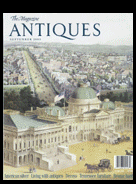
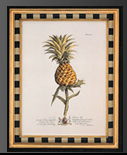
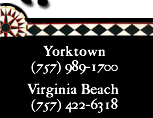
Frequently Asked Questions
Q: I live out of the area, can you frame my artwork?
A: Yes. In fact, we often frame pieces for owners who live out of the area. We can provide you with guidelines for safely shipping us your artwork. In rare cases when curators prefer to maintain the artwork on site, we can coordinate with local framers to obtain accurate measurements and later correctly install the artwork.
Most importantly, we can discuss your piece, the frame designs and options available and even send samples to ensure the best possible match of frame and artwork.
Q: How do you design your floorcloths?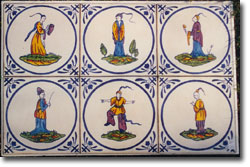
A: We use sketches to develop the initial design and then prepare a computer-designed mock-up of the end floorcloth. We can then match colors to paint chips or swatches to provide an artist's rendering that will convey the final design. During the design process we will also discuss the floorcloth size, the room where it is to be used and any unique elements or concerns.
Q: Did you provide the rolled maps used in The Patriot?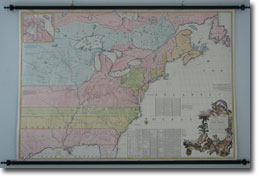
A: Yes, we provided many of
the maps and other art that is found throughout the movie. The producers
were very concerned with making sure the sets
accurately reflected 18th Century American life and our works supported
that effort. The maps and other prints for the Patriot are hand-colored
reproductions.
Q: Are your 18th Century prints originals or reproductions?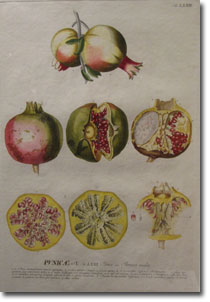
A: An 18th Century print is artwork that was created in the 1700s. In most cases the artwork was printed one sheet at a time on a hand-fed press, with one color of ink. Once the ink dried, each individual print was hand colored to enhance the work and add detail. Colors came from pigments found in nature.
A reproduction is created by modern print processes, usually color printed but sometimes hand watercolored. We specialize in verifying, obtaining and selling true 18th Century prints, including outstanding period maps. In some cases, and by request, we also stock modern reproductions.
Q: What makes your frames 18th Century?
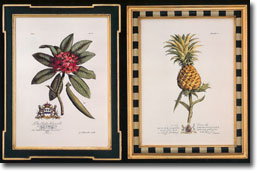 A: Our
frames are molded with modern woodcutting tools to the exact profiles
found in antique 18th Century frames. In most cases we have worked with
the milling yard to develop the precise blades needed to cut these profiles
-- these are generally moldings that are not available to the general
public.
We
use
the finest
woods and then hand finish the frames using materials and techniques utilized
in the 1700s, including rabbit-skin glue, gilding and hand-rubbed finishes.
A: Our
frames are molded with modern woodcutting tools to the exact profiles
found in antique 18th Century frames. In most cases we have worked with
the milling yard to develop the precise blades needed to cut these profiles
-- these are generally moldings that are not available to the general
public.
We
use
the finest
woods and then hand finish the frames using materials and techniques utilized
in the 1700s, including rabbit-skin glue, gilding and hand-rubbed finishes.
